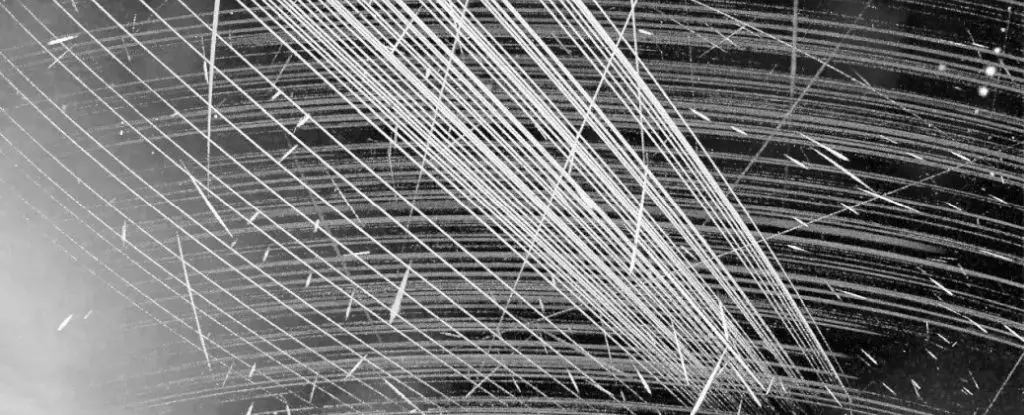As humanity pushes the boundaries of satellite technology and space exploration, the emergence of satellite swarms in low Earth orbit (LEO) brings both excitement and concern. Companies like SpaceX, OneWeb, and Amazon are launching thousands of satellites to provide global internet coverage, yet these technological advancements also introduce significant challenges, especially regarding radiation pollution. Recent studies reveal that the second-generation Starlink satellites are emitting alarming levels of radio frequency interference that could compromise vital radio astronomy efforts. This emerging crisis demands urgent attention from scientists, regulators, and the industry alike.
With more than 6,000 satellites currently in orbit and a plethora of new launches scheduled, the satellite environment is becoming increasingly congested. SpaceX’s Starlink, OneWeb, and Amazon collectively aim to deploy thousands of satellites, each contributing to a growing radiation footprint. The V2 Mini versions of Starlink have been identified as particularly problematic, leaking radiation intensity up to 32 times greater than their first-generation predecessors. The implications are profound: as these satellites proliferate, light pollution will not only affect the visual landscape of our night sky but also the radio wavelengths that are essential for scientific observation.
Radio wavelengths hold critical information about the universe, enabling astronomers to study celestial phenomena from pulsars to galaxies. When satellites inadvertently infringe upon these wavelengths with unintended electromagnetic emissions, they complicate the already complex task of understanding the cosmos. Notably, the emissions from these newer satellites have been reported to be ten million times brighter than the faintest astrophysical sources observed using advanced instruments like the LOFAR.
A recent study that utilized the LOFAR, a comprehensive network comprised of 20,000 radio antennas, underscored the urgency of addressing this issue. Researchers found that the new Starlink satellites emit radio waves outside the designated communication frequencies, significantly impacting the 150.05-153 MHz range utilized for radio astronomy. The study’s findings create a compelling case for the establishment of regulatory measures to manage the unintended emissions from these satellite constellations.
Currently, the regulatory landscape is either inadequate or non-existent, leaving researchers and astronomers to grapple with uncontrolled radio pollution. The need for proactive steps cannot be overstated; while one satellite’s leakage may seem insignificant, the cumulative effect of thousands could be devastating. Experts such as Cees Bassa from the Netherlands Institute for Radio Astronomy have appealed to companies to employ data analytics to track and rectify unintended emissions. This proactive approach could be pivotal in ensuring that radio astronomy remains viable.
The concerns surrounding satellite emissions extend beyond the immediate ramifications for radio astronomy. The technological innovations stemming from space research have led to groundbreaking advancements in various sectors, including telecommunications, navigation, and medical technology. Disrupting the foundation of these scientific pursuits has the potential to stymie future innovations and discoveries that could enhance life on Earth. As Jessica Dempsey, the director of ASTRON, poignantly stated, the industry must meet researchers “halfway” to protect our celestial observations from unwanted interference.
The convergence of space exploration and technological development also raises ethical questions about the stewardship of our shared cosmic environment. As Federico Di Vruno from the SKA Observatory highlights, the satellite industry bears a responsibility to mitigate unintended emissions and adopt sustainable practices in orbit. This ethical stewardship is crucial as we seek to balance the benefits of satellite communication with the need to preserve our sky for scientific inquiry.
As we stand at a crossroads in our journey into space, it is evident that actions must be taken to safeguard the integrity of our night skies. With satellite operators responsive to community and scientific concerns, it is possible to develop innovative solutions that minimize radiation leakage. Regulatory bodies should respond to these findings by establishing guidelines that prioritize the protection of vital radio frequencies from unintended emissions.
The growing presence of satellite swarms requires a concerted effort among corporations, regulatory bodies, and the scientific community to address the challenges of radiation pollution. By prioritizing sustainability and responsible deployment strategies, we can ensure that future generations have the opportunity to explore the universe while preserving the invaluable insights that radio astronomy provides. The time for decisive action is now.


Leave a Reply